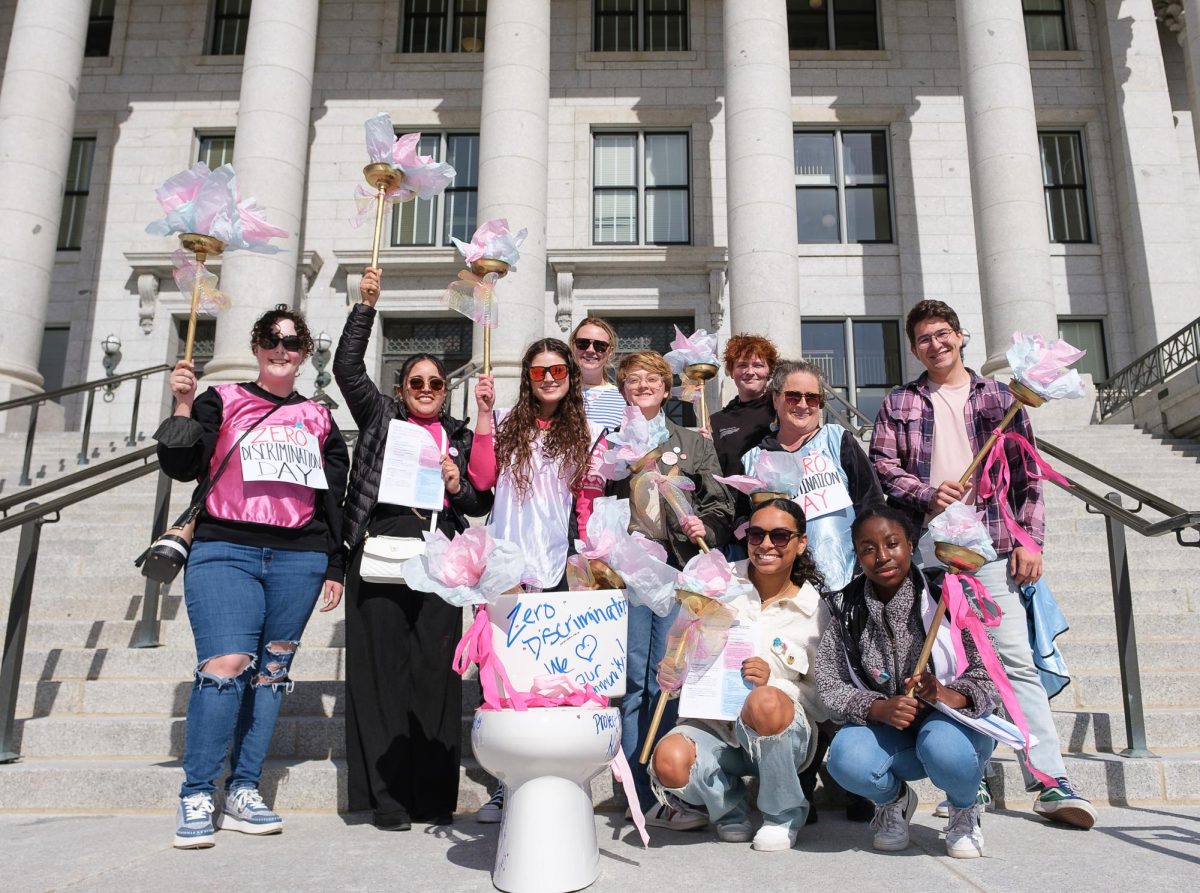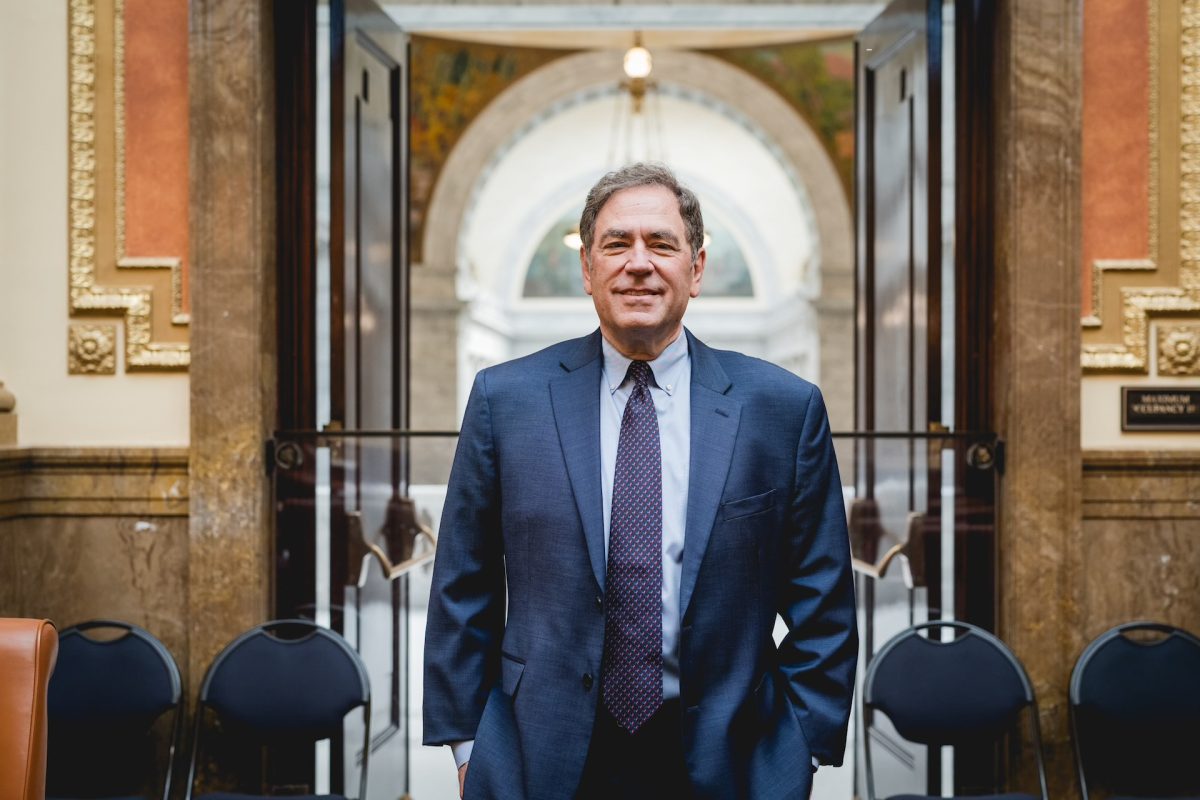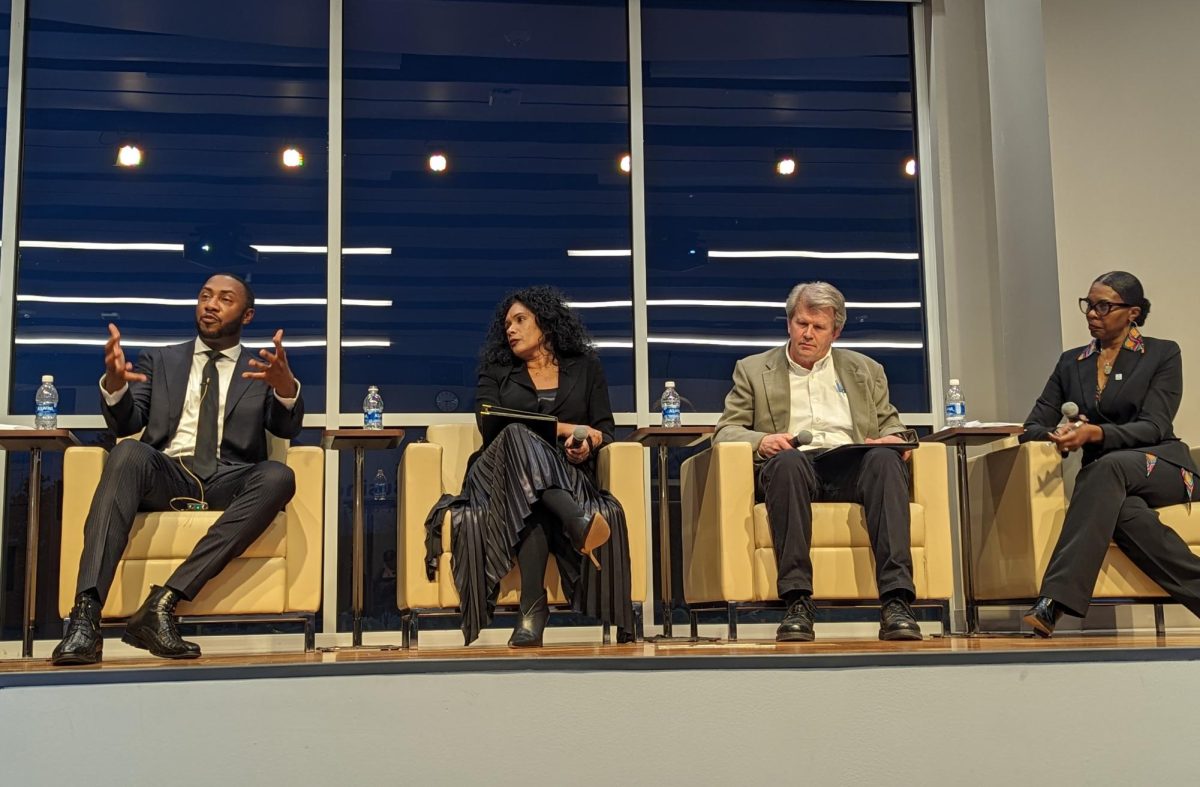In the spirit of “Humans of New York,” we decided to try our hand at Brandon Stanton’s craft. We walked around the U’s campus, looking for people with a story to tell. And this is what we found.

It started with an awkward silence.
Alyssa Claerhout, a sophomore, said “This is like one of the most awkward first dates. You totally know what I’m talking about though. Just like, what’s your favorite color?”
What are you studying?
“Yeah — Oh! I thought you were — that was another [one of those questions].”
Well it is, but . . .
“I’m thinking multidisciplinary design with a minor in math because I like the creative side, but I also like the challenging math side.”
Not that many people like math. What makes you like it?
“I just like the satisfaction where you’re sitting there at a problem for hours and it’ll click and you’ll find the answer. And you say ‘how did I not know that?’ I’ve learned that the only time I can do math homework is really early in the morning and really late at night. And there’s something about that. The clarity in my brain kicks in, I don’t know why. It’s the adrenaline or something. [It will be] eleven o’ clock at night, and ‘oh my gosh I’ve gotta finish my math!’”

Emily Black, a graduate student in architecture, and Brent Rowland, a graduate student in film and media arts, are building a set for a short film. It’s supposed to be an angled room, forcing a perspective.
“It’s not a major league crazy weird perspective,” Rowland said.
But Rowland said it’s just enough to make the audience feel off.
Black: “I don’t know what’s going on at the other side of campus, what people are interested in. We’re in our little bubble, and I’m sure you feel the same way. That’s why I’m glad you’re reaching out to us; this cross disciplinary work is really great.”
Well, let’s hear about your bubble . . .
Black: “Essentially, we’re creative problem solvers. We just have different set of tools and expertise. My expertise is in building and structure, and [his] is in concepts and communication or something. They always joke that, if you put a bunch of architects on a project nothing will ever get done, because they all have this narrow perspective. And that’s what’s interesting about working with other disciplines. I feel like you can actually accomplish more because there’s less questioning and backtracking. It’s easier to move forward when everybody’s working on their own thing. So I wish there was more collaboration in the school, but sometimes it’s just not possible. And in architecture, the education portion of it is meant to be self-explorative, and you do need to live in your own bubble for a bit, and you’ll be forced to interact with people and compromise.”
Rowland: “It’s like what Orson Welles, the filmmaker, said. ‘A poet needs a pen; a filmmaker needs an army.’ It’s true. And that’s why I reached out to Emily. I wanted to collaborate more, and I don’t see that a lot since I’ve been here, it’s my second year here. I want to reach out to the school of music — go tell them I have this idea and I need help executing it. I really like that process, where someone says ‘oh yeah I can do that’, and you both make it work.”
Does it always go well?
Rowland: “There’s times you work with an actor that’s not as experienced as another actor [. . .] I’ve been in those situations where you get an actor that just can’t do what you want them to do, and you just have to live with what they can’t do. We’re just students. This is the level we’re at right now; it’s a stupid project so you just run with it.”
Does that ring true in architecture?
Black: “I was in Design Build Bluff, which was a group of twelve students working on an 800 sq. foot house [on a Navajo reserve]. This is a really tiny project for the size of the group you’re supposed to design with, and that was really difficult. You have to prove yourself a lot, you know? People are going to question your decisions. You can have instinct, and people can go with that instinct, but you’re gonna have to back that up. You can’t just have ‘this is really cool’ — that’s not an answer. So there was a lot of questioning between the students.”

Mike McKay was sitting outside the Carolyn Tanner Irish Humanities Building, while most students were inside Rice-Eccles Stadium watching the football game.
So where are you at right now? What are you up to?
“Right now, nothing. When I got out of the army I came here for a little bit. After the winter break I’ll probably go back to school. Probably not here. I’ll probably go back to Oklahoma State, where I started.”
Why’d you leave Oklahoma State to join the army?
“When I went to Oklahoma State, I was young, like 17. I didn’t take it very serious. My neighbor, when I was about 18 or 19, he’s an executive for New York Life, he helped me start my own business. It was a gutter guard installation, gutter cleaning, stuff like that [. . .] It was going alright, it just wasn’t doing it for me. It was a little lucrative for my age. But I was just bored.
In Iraq, I was in Baghdad, and three months into the year-long tour, they had us pack up and go to Afghanistan, which is really unprecedented. There’s only one or two units that have ever done that big of a move. I ended up down in Kandahar, right around when Obama had the big push, the surge in troops. And in southern Afghanistan there wasn’t a big U.S. presence. It was some Canadian forces, Romanian, so we were the only U.S. unit down there. As soon as we got there, it kicked off, it was kind of crazy, Kandahar province, Zabol province, just all over the place, moving around to different fogs, sleeping outside the trucks.”
What did you do?
“I was Sergeant, E5. I was in charge of the dismount group; I was a gunner. Did all kinds of stuff. In Iraq it was route clearance, and when we got to Afghanistan, our sister companies took over the route clearance. We did some route clearance but [. . .] mostly presence controls. We’d get intel, and we’d pretty much go to the house, at night, kick in the door and take care of it.”
Did you ever kick the wrong door down?
“Luckily, no. Our sister companies on the other hand, they fooled up a few times. We were lucky. We had some good intel, so we never, you know.”
And then you came to Utah. Why here?
“My dad’s side of the family lives here. You familiar with the LDS Church at all? My great grandpa was David O. McKay, president of the church or something. So we have a lot of deep family ties here. I’ve just been relaxing, working a little bit, you know, living.”
[email protected]
@SeymourSkimmer
Write for Us
Want your voice to be heard? Submit a letter to the editor, send us an op-ed pitch or check out our open positions for the chance to be published by the Daily Utah Chronicle.
@TheChrony
Print Issues
Write for Us
Want your voice to be heard? Submit a letter to the editor, send us an op-ed pitch or check out our open positions for the chance to be published by the Daily Utah Chronicle.
@TheChrony
Print Issues
Humans of the U
September 7, 2014
Leave a Comment




















